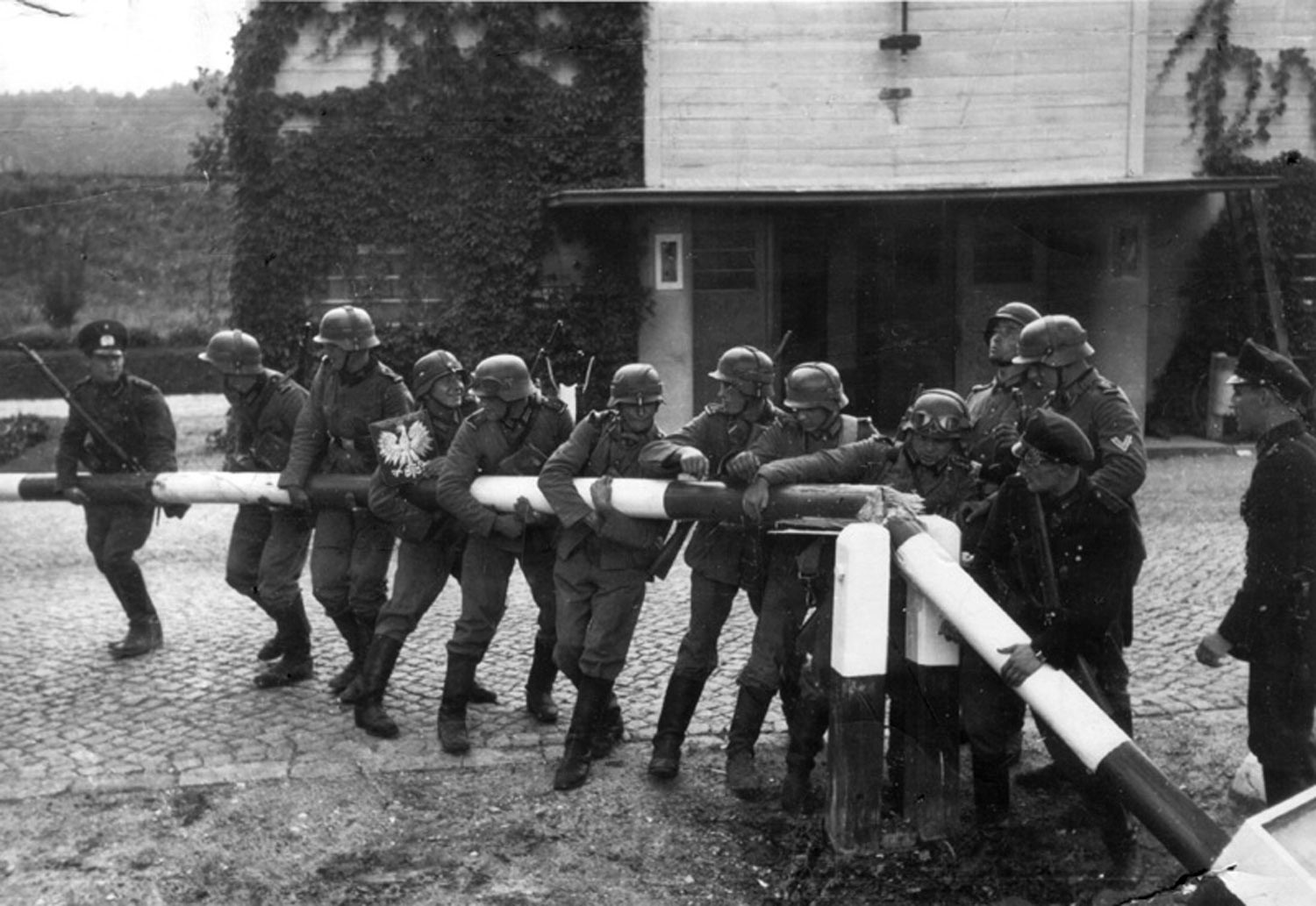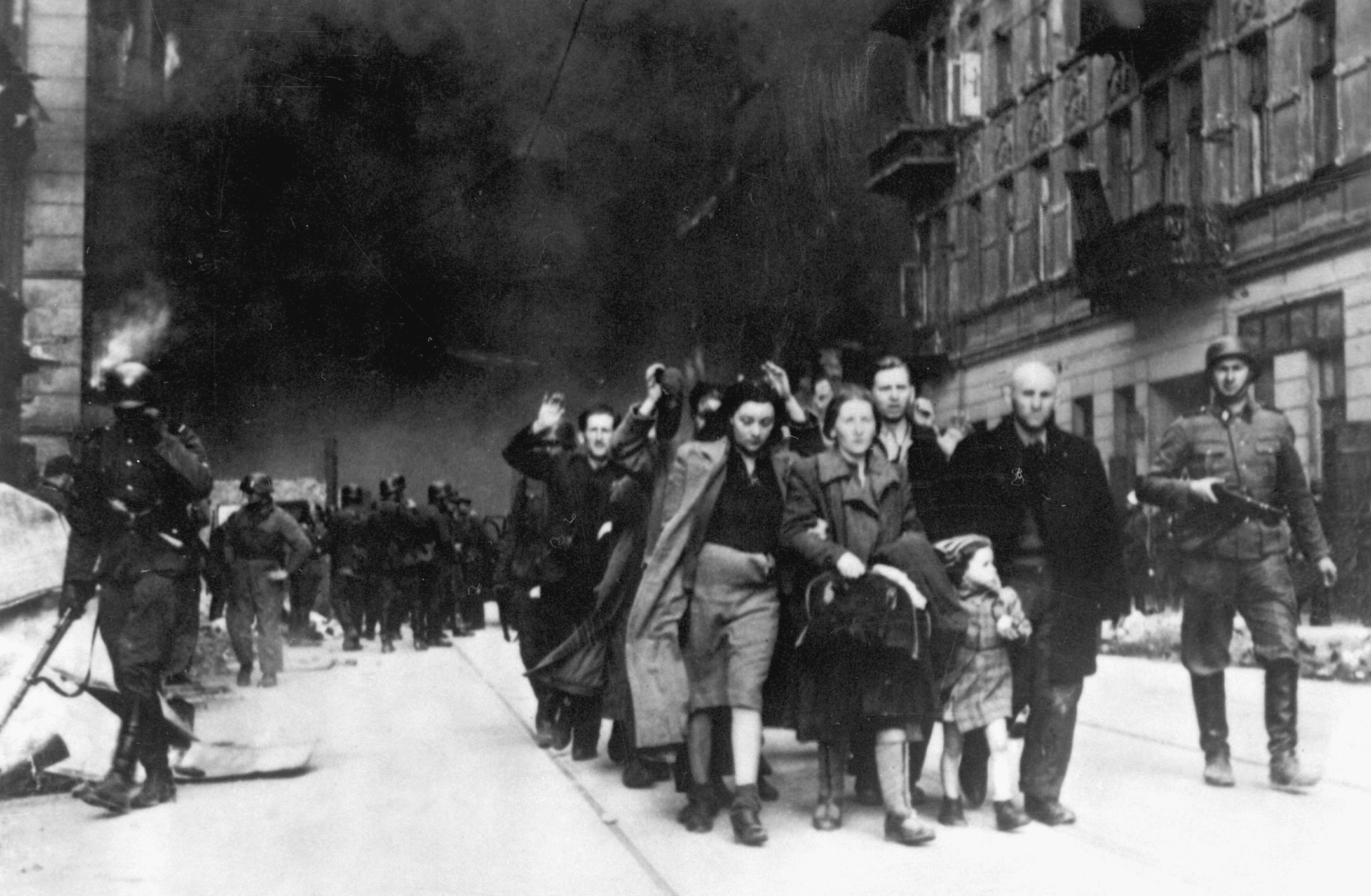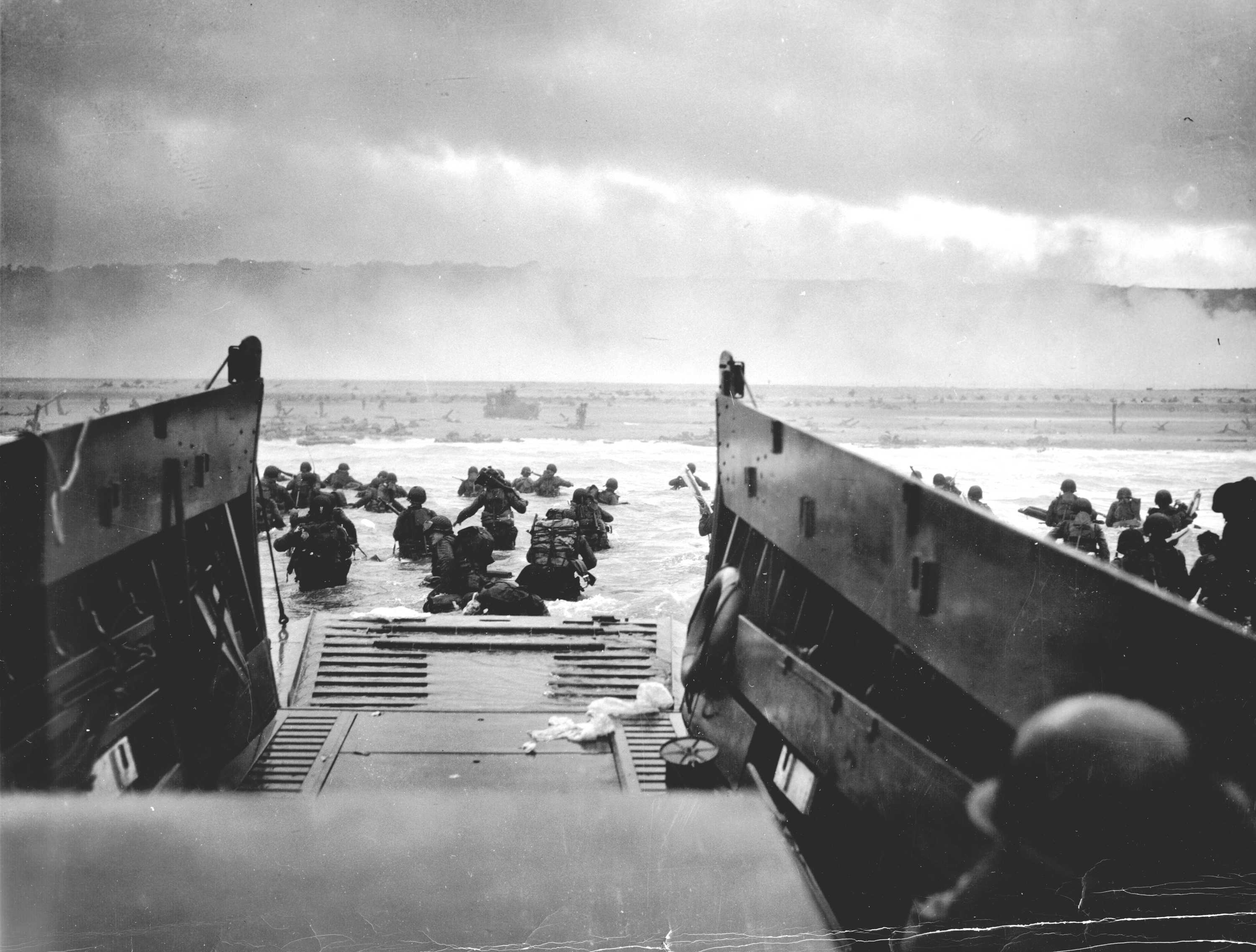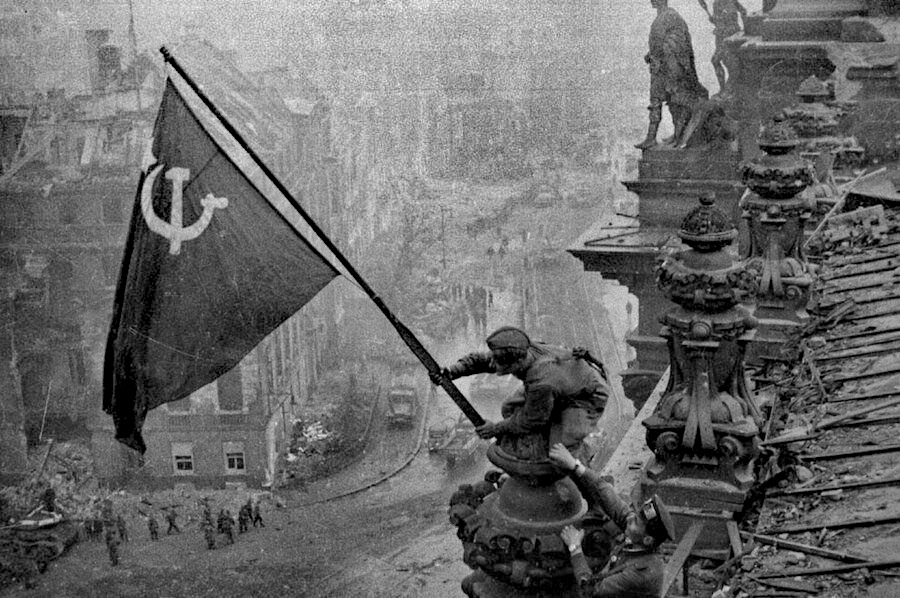Before the war
30 January 1933 Adolf Hitler becomes the Chancellor of Germany.
22 March 1933 First German concentration camp created in Dachau, Germany.
25 November 1936 Nazi Germany and Japan sign the Anti-Comintern Pact, directed against communism and the USSR. Italy joins the pact in 1937.
7 July 1937 Japanese attack on China, beginning of the Japanese-Chinese War.
12 March 1938 Anschluss of Austria. Austria is incorporated into Germany.
30 September 1938 Munich Agreement – part of Czechoslovakia is incorporated by Germany. To keep the peace European powers agreed to Hitler’s demands.
1939
14 March 1939 Slovakia supported by Germany declares independence from Czechoslovakia. On 15 March Germany invades Czechoslovakia and establishes the Protectorate of Bohemia and Moravia.
3 May 1939 Stalin replaced Maxim Litvinov, Soviet Commissar for Foreign Affairs, who was identified with the anti-German position. This was a significant move to improve the relations between the Soviet Union and Germany.
23 August 1939 - The Molotov–Ribbentrop Pact was signed. Nazi Germany and the Soviet Union agreed not to attack each other and to remain neutral if attacked by a third power. Secret clauses in the pact divided up other countries into respective spheres of influence in Central and Eastern Europe, including a partitioning of Poland.
1 September 1939 German attack on Poland, triggering the Second World War.
3 September 1939 UK and France declare war on Germany.
17 September 1939 USSR attack on Poland and the incorporation of its eastern borderlands, more than one-half of Polish territory.
28 September 1939 Capitulation of Warsaw, German occupation of the western half of Poland.
8 October 1939 The Piotrków Trybunalski Ghetto (Yiddish: פּיִעטריקאָװ) was created in Piotrków Trybunalski. It was the first Nazi ghetto in occupied Europe.
1940
9 April – 10 June 1940 German attack on Denmark and Norway, beginning the German occupation of these countries
13 March 1940 After the Winter War with Finland (30.11.39-13.03.40) the USSR incorporates some important territories but fails to create a Finish SSR.
10 May – 25 June 1940 Battle of France. German attack on France, Belgium, Netherlands and Luxembourg, which fall under German occupation.
June 1940 USSR incorporates the Baltic States.
26 May – 4 June 1940 The Dunkirk evacuation of Allied soldiers from France.
22 June 1940 Germany defeated France. In the southern half of France, Germany created a puppet French State (État français) – so-called Vichy France.
28 June 1940 the Soviet Union started the occupation of Bessarabia and Northern Bukovina.
10 July – 31 October 1940 Battle of Britain. UK’s successful defence against German air force attacks.
1941
11 March 1941 Lend-Lease policy – USA’s financial and military aid for the countries fighting the Axis.
20 May – 1 June 1941 The German invaded Crete, Greece
22 June 1941 Germany launches operation Barbarossa. USSR joins the Allies after German attack.
8 September 1941 The start of the German siege of Leningrad.
2 October 1941 – 7 January 1942 Battle of Moscow. Soviets fend off an attack by the German army. Start of the Soviet counteroffensive in the centre and northern front.
7 December 1941 Attack on Pearl Harbor by Japanese.
8 December 1941 The United States enter the war.
9 December 1941 China joins the Allies against the Axis.
1942
1 January 1942 Declaration of the United Nations signed by the Big Four (USA, UK, USSR and China). The document formalized the alliance against the Axis and was a basis for the United Nations.
20 January 1942 Wannsee Conference. 15 senior officials of Nazi Germany met to ensure all administrative leaders about implementing of the “Final Solution (die Endlösung) to the Jewish Question”. As a result a network of extermination camps was built in which millions of Jews were murdered.
4 – 8 May 1942 Pacific War: Battle of the Coral Sea. Naval battle between Japanese and American-Australian forces. Allied forces stop the Japanese advance into the Pacific.
4 – 7 June 1942 Battle of Midway. American victory against Japan in a naval and air battle. First and decisive American victory in the Pacific War.
7 August 1942 – 9 February 1943 Guadalcanal Campaign. Major Allied victory over Japan in a series of land battles. Start of the American offensive in the Pacific.
23 October – 11 November 1942 Second battle of El-Alamain. Important victory of the Allies against the Axis in North Africa.
8–16 November 1942 Operation Torch. Allied invasion of North Africa (Casablanca, Oran and Algiers) controlled by Vichy France. Results in Allied victory.
22–26 November 1942 First Cairo Conference. Chiang Kaishek, Churchill and Roosevelt discussed fighting Japan until its unconditional surrender and seized territories had been reclaimed.
1943
14 – 24 January 1943 Casablanca Conference. Churchill, Roosevelt and de Gaulle decided to fight until an unconditional surrender (without any guarantees to the defeated party) of Germany.
19 April – 16 May 1943 Warsaw Ghetto uprising. Casualties: up to 40,000 insurgents and civilians.
17 July 1942 – 2 February 1943 Battle of Stalingrad. Soviet victory over Germany – the turning point of the war on the eastern front.
5 July – 23 August 1943 Battle of Kursk. Soviet victory over Germany. Start of the Red Army offensive on the Eastern front.
10 July – 8 September 1943 Allied attack on Sicily. The southern part of Italy falls under Allied rule.
28 November – 1 December 1943 Tehran Conference. First meeting of the Big Three – Churchill (UK), Roosevelt (USA) and Stalin (USSR).The leaders decided to open a new front in France.
1944
17 January – 18 May 1944 Battle of Monte Cassino. Allied victory over Axis forces in Italy.
27 January 1944 End of the siege of Leningrad. Over two year-long (900 days) siege causes mass death from starvation of almost 1,000,000 civilians. Finally, the Soviets lift the siege of the city.
6 June – 31 August 1944 Operation Overlord. Landing in Normandy and Allied offensive in France.
20 July 1944 20 July plot. Germany army officer, Claus von Stauffenberg attempted to kill Hitler by detonating an explosive hidden in a briefcase, however failed due to the location of the bomb at the time of detonation, the blast only dealing minor injuries to Hitler.
23 July 1944 Liberation of Majdanek Extermination Camp. On the night of 22-23 July 1944, Soviet soldiers of the Red Army came upon Majdanek, the first of the Nazi camps to be liberated. They freed just under 500 prisoners.
1 August – 2 October 1944 Warsaw Uprising. Casualties: 150–180,000 insurgents and civilians. Insurgents were not helped by Soviet forces stationed on the right bank of the Vistula River.
15 August 1944 Operation Dragoon. Allied attack on southern France.
19–25 August 1944 Uprising in Paris, followed by liberation of the city by the Western Allies. Casualities: 1–1,300 insurgents and civilians.
29 August – 28 October 1944 Uprising in Slovakia. Casualties: 4,000 insurgents and civilians
17 October – 26 December 1944 Battle of Leyte. Allied victory, first step in freeing the Philippines from Japanese occupation.
1945
27 January 1945 Liberation of Auschwitz concentration camp. The German Nazi concentration camp and extermination camp in occupied Poland where more than a million people were murdered as part of the Nazis' "Final Solution" to the Jewish question—was liberated by the Soviet Red Army during the Vistula–Oder Offensive.
12 January – 4 February 1945 Red Army winter offensive. Soviets capture Poland west of the Vistula River and advance on Berlin.
4–11 February 1945 Yalta Conference where the Big Three decided on the division of Germany into four occupation zones and set the Polish eastern border on the Curzon line. The conference effectively allowed the USSR to expand its sphere of influence to Central Europe.
13–15 February 1945 Allied bombing of Dresden. It completely destroys the city and causes the death of thousands of civilians.
16 April – 2 May 1945 Battle of Berlin. Soviet victory and fall of Nazi Germany.
5–9 May 1945 Uprising in Prague. Casualties: 8–9,000 insurgents and civilians.
8 May 1945 Unconditional surrender of Germany. The end of war in Europe.
25 April – 26 June 1945 San Francisco Conference and foundation of the United Nations.
17 July – 2 August 1945 Potsdam Conference where the Big Three established rules by which the Allies would govern Germany, set the new borders of Germany and Poland, decided on the resettlement of Germans and called on Japan to surrender.
6 August 1945 First American nuclear attack on Hiroshima, Japan.
9 August 1945 Second and last American nuclear attack, on Nagasaki, Japan. Soviet attack on Manchukuo (Japanese puppet state) in Manchuria.
2 September 1945 Unconditional surrender of Japan. The end of war in the Pacific theatre.
20 November 1945 Nuremberg trials of The International Military Tribunal.
1946
5 March 1946 Iron Curtain Speech - Winston Churchill delivers his famous "Iron Curtain" speech in Fulton, Missouri, marking the beginning of the Cold War era and highlighting the division between Western democracies and Eastern communist states.
19 September 1946 Churchill’s speech in Zurich, stressing the role of a united Europe.
1947
12 March 1947 Truman Doctrine Announced - President Harry S. Truman articulates the Truman Doctrine, pledging to support Greece and Turkey against communist expansion, which signifies the start of the U.S. policy of containment.
5 June 1947 Marshall Plan Proposed - Secretary of State George Marshall outlines the European Recovery Program, known as the Marshall Plan, which provides economic assistance to rebuild Western European economies.




